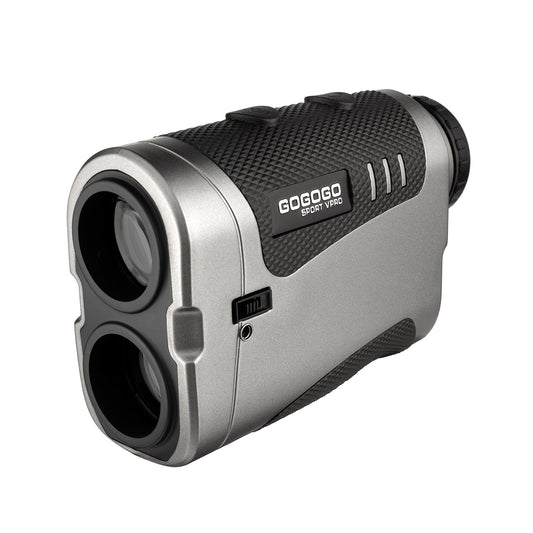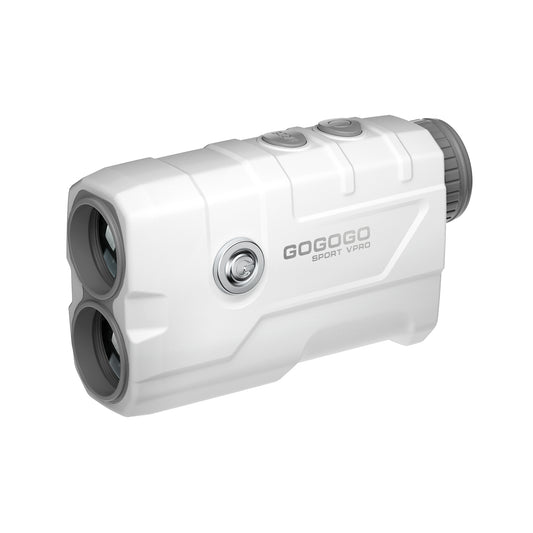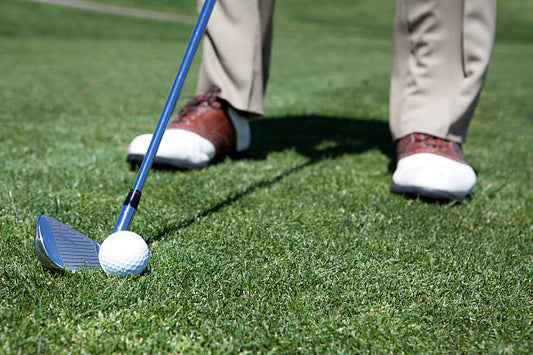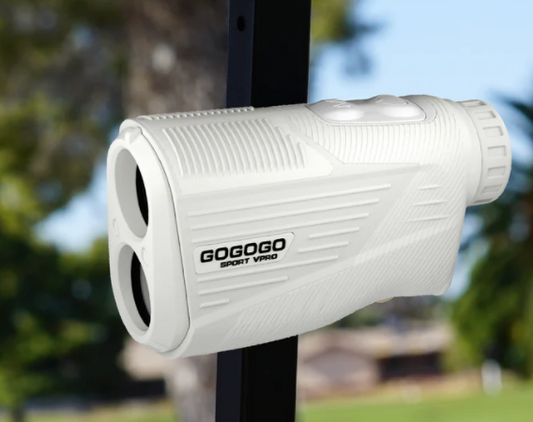Golf is a sport that combines precision, strategy, and a deep appreciation for nature. Whether you are a seasoned player or a novice, having the right tools can significantly enhance your performance on the course. One such tool that has become increasingly popular among golfers is the golf rangefinder. This article provides a comprehensive guide on how to use a golf rangefinder effectively, the technology behind it, common errors, and tips for ensuring accurate measurements.

Understanding Golf Rangefinders
Golf rangefinders are devices that help players determine the distance to various points on the golf course, such as the flagstick, hazards, or the green itself. They can significantly improve a player’s accuracy and decision-making, allowing golfers to select the right club and plan their shots more effectively.
Why Use a Golf Rangefinder?
A golf rangefinder offers several significant advantages that can enhance your golfing experience and improve your scores:
1. Accurate Distance Measurements:
- Precise Club Selection:Knowing the exact distance to the target allows you to select the most appropriate club for your shot.
- Consistent Shots:Consistent distance measurements lead to more consistent shots and fewer misses.
2. Improved Accuracy:
- Avoid Over- or Under-Clubbing:Accurate distance information helps you avoid hitting your shots too long or too short.
- Better Approach Shots:Knowing the precise distance to the green allows you to approach the pin with more confidence.
3. Enhanced Strategy:
- Risk Assessment:Rangefinders help you assess the risk and reward of different shots, allowing you to make more informed decisions.
- Hazard Avoidance: Knowing the distance to hazards helps you plan your shot to avoid them.
4. Time-Saving:
- Faster Pace of Play:Using a rangefinder can help you play faster, as you don't have to estimate distances.
- Reduced Frustration:Fewer missed shots can lead to a more enjoyable golfing experience.
5. Increased Confidence:
- Improved Accuracy:Knowing the exact distance to the target can boost your confidence and reduce anxiety.
- Better Decision-Making:Accurate information empowers you to make better decisions on the course.

How to Use a Golf Rangefinder
1. Step-by-Step Guide on Using a Golf Rangefinder
Using a golf rangefinder may seem intimidating at first, but with a little practice, it becomes an invaluable part of your golfing routine. Here’s a step-by-step guide:
- Turn on the Device: Most rangefinders will have a power button; ensure that your device is charged or has fresh batteries.
- Select the Measurement Mode: Depending on your rangefinder, you may have different measurement modes, such as standard, flag lock, or slope-adjusted distances. Choose the mode that best suits your needs.
- Aim at the Target: Point the rangefinder at the target you want to measure. This could be the flag, a hazard, or a specific landmark on the course.
- Press the Measurement Button: Hold the button until the rangefinder locks onto the target. Most laser rangefinders will emit a slight beep or vibration once the distance is locked.
- Read the Distance: The rangefinder will display the distance to the target on its screen. Make a note of this measurement as you plan your shot.
2. Best Practices for Ensuring Accurate Measurements
To get the most out of your rangefinder, consider the following best practices:
- Stabilize Your Position: Ensure you are standing steady when aiming at the target to avoid shaky readings.
- Use Two Hands: If necessary, use both hands to hold the device steady, especially in windy conditions.
- Consider the Target’s Height: When measuring the distance to the flag, ensure the flag is at the same height as your position, or adjust accordingly.
How a Golf Rangefinder Works
1. Explanation of the Underlying Technology
Golf rangefinders primarily operate on two types of technology: laser and GPS.
- Laser Rangefinders: These devices use a laser beam to measure distance. When you point the rangefinder at a target and activate it, the device emits a laser that bounces off the target and returns to the device. The time it takes for the laser to return is calculated to determine the distance. Laser rangefinders are highly accurate, often within one yard.
- GPS Rangefinders: These devices use satellite signals to determine your location on the golf course and provide distances to various points, including the front, middle, and back of the green. While GPS devices may not be as precise as laser rangefinders, they offer the advantage of providing distances to multiple targets quickly.
2. Different Types of Rangefinders (Laser vs. GPS)
- Laser Rangefinders: Known for their accuracy and ability to measure distances to specific targets. They are ideal for golfers who want precise measurements of the flag and are often favored by more serious players.
- GPS Rangefinders:Generally easier to use, these devices can provide a quick overview of the course layout and distances. They are often built into watches or handheld devices and may include additional features such as shot tracking.
3. Understanding the Distance Measurement Process
The distance measurement process in laser rangefinders is based on the principle of triangulation. When you point the rangefinder at a target, the device calculates the angle and the distance traveled by the laser to determine the exact distance to the target. In GPS rangefinders, the device calculates distances based on your GPS coordinates and the coordinates of the target on the course map.

Common Measurement Errors in Golf Rangefinders
While golf rangefinders are designed for accuracy, they can still produce errors. Commonly, laser rangefinders can have an error margin of +/- 1 yard, while GPS devices may have a slightly larger error margin of ±3 to ±5 yards, depending on satellite reception and terrain.
Factors That Contribute to Inaccuracies
Several factors can influence the accuracy of a golf rangefinder:
- Environmental Conditions: Weather conditions such as fog, rain, or bright sunlight can affect the performance of a laser rangefinder. For GPS devices, heavy tree cover or tall buildings can obstruct satellite signals, leading to inaccurate readings.
- Obstructions: Objects between the rangefinder and the target can cause interference. For laser rangefinders, this is especially critical, as any obstruction can lead to incorrect measurements.
- Target Size: Smaller targets, such as a flagstick, can be more challenging to measure accurately compared to larger landmarks.
- User Error:Misalignment when aiming the device or pressing the measurement button too soon can result in inaccurate distances. Proper technique is crucial for achieving reliable results.
How to Avoid Errors When Using a Golf Rangefinder
1. Tips to Minimize Measurement Errors
- Choose the Right Time: Use the rangefinder during optimal weather conditions. Avoid using it in fog or heavy rain, as these can significantly impact accuracy.
- Ensure a Clear Line of Sight:Make sure there are no obstructions between the rangefinder and the target. Position yourself to have a clear view, especially when measuring to the flagstick.
- Double-check Measurements: If you’re uncertain about the reading, take a second measurement. If both readings are consistent, you can have more confidence in the result.
2. Best Conditions for Rangefinder Accuracy
- Sunny Days:Clear skies allow for better visibility and accuracy for laser rangefinders.
- Open Areas: Choose open spaces without obstructions for the best readings.
- Stable Ground: Stand on stable ground to avoid shifting that could affect measurements.
3. Correct Positioning and Usage Techniques
- Hold Steady: Use both hands to stabilize the rangefinder. Avoid moving or swaying while taking a measurement.
- Align Properly: Ensure the reticle is aligned with the target. Look through the viewfinder and focus on the target before activating the measurement.

Key Considerations When Using a Golf Rangefinder
1. Important Points to Keep in Mind During Use
- Device Maintenance:Regularly check the battery and keep the lens clean. A dirty lens can obstruct your view and lead to inaccuracies.
- Understand the Rules:Familiarize yourself with the rules of golf regarding the use of rangefinders, especially in tournament play. Some courses may have specific regulations regarding slope features.
- Practice Makes Perfect:Regular practice with your rangefinder will enhance your skill and familiarity with the device. The more you practice, the more confident you will become in its use.
2. Environmental Factors to Be Aware Of
- Terrain Changes:Be mindful of the course layout. Elevation changes can affect the perceived distance to a target.
- Wind Conditions: Wind can alter the flight of the ball, so understanding its effect can enhance your overall strategy.
3. Proper Care and Maintenance of the Device
- Store Safely: Keep your rangefinder in a protective case when not in use. This helps prevent damage from impacts or moisture.
- Clean Regularly: Use a microfiber cloth to clean the lens and body of the rangefinder. Avoid using harsh chemicals that could damage the device.

How to Verify the Accuracy of Your Golf Rangefinder's Results
1. Methods for Checking the Validity of Measurement Results
- Compare with Course Markers: Use established distance markers on the course (like sprinkler heads) to verify the accuracy of your rangefinder’s measurements.
- Use Multiple Measurements: Take multiple measurements to the same target and compare the results. Consistent readings indicate accuracy.
- Check with Playing Partners: If playing with others, compare readings from your rangefinder with theirs to gauge accuracy.
2. Troubleshooting Tips if the Rangefinder Gives Inconsistent Readings
- Reset the Device:If your rangefinder starts showing inconsistent results, turn it off and on again. This can reset any temporary issues.
- Check the Battery: Low battery power can affect performance. Ensure your rangefinder is fully charged or has fresh batteries.
- Inspect for Damage:Regularly check the device for signs of wear or damage. A cracked lens or malfunctioning button may lead to inaccurate readings.
In summary, golf rangefinders are invaluable tools for golfers seeking to enhance their game. Understanding how to use them effectively can lead to improved accuracy and decision-making on the course. Familiarizing yourself with the technology, maintaining your device, and practicing regularly are key to maximizing the benefits of a golf rangefinder.

Final Tips for Effective Use of a Golf Rangefinder
- Stay Informed: Keep abreast of new technologies and advancements in rangefinders to ensure you are using the best tools available.
- Utilize Resources: Consider online tutorials or manufacturer manuals for additional tips and features that may enhance your experience.
- Enjoy the Game: Ultimately, golf is about enjoying the experience. Use your rangefinder as a tool to enhance your play and appreciate the beauty of the game.
By integrating a golf rangefinder into your routine, you can elevate your performance and enjoy the game even more. Whether you’re hitting the links for leisure or competition, accurate distance measurement is a game-changer that can help you play to your full potential.







![[2025] The Ultimate Guide to Pinseeker Rangefinders for Golfers](http://gogogosport.com/cdn/shop/articles/gogogo_sport_vpro_pinseeker_rangefinder.png?v=1757993796&width=533)